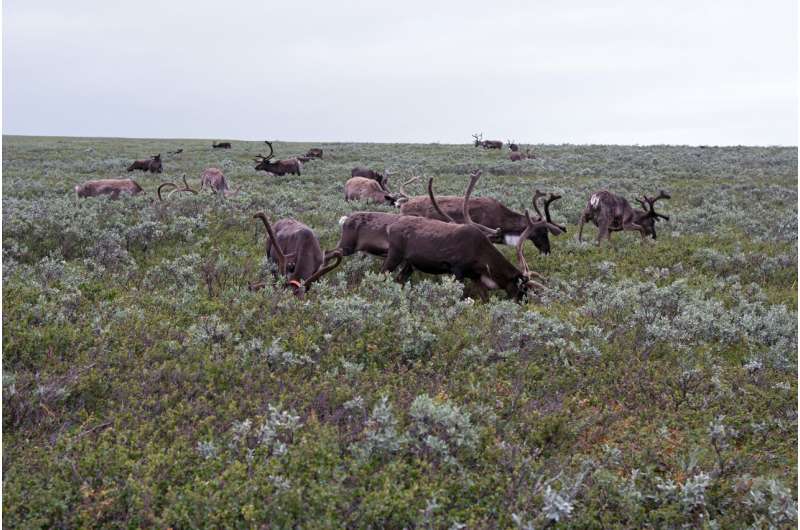Willow-dominated wetlands of Lapland fells are resilient to reindeer grazing

A long-term study across the Finnish-Norwegian border in Lapland proved wetland vegetation to be resilient to reindeer summer grazing. The reindeer fence along the national border, built in 1950s, provided a chance to study the long-term effects of reindeer grazing. The study included also experimental fences that excluded reindeer grazing for 13 years on the Finnish side of the border. In Finland, reindeer graze in wetlands of the fells, the Lappish mountains, in summer. In Norway, summer grazing has been prohibited in the fells since the late 1950s, in order to protect winter pastures from overgrazing, and reindeer migrate to coastal areas for summer.
Summer grazing by reindeer in the fells has impact on the abundance of willows. In absence of summer grazing, willows grew higher and produced more flowers. Trampling by reindeer affects mosses, and their total cover was smallest in grazed wetlands in Finland. In 13 years of experimental exclusion of reindeer grazing, willows recovered but they were still smaller, on average, than in Norway. Besides these effects, vegetation was little affected by reindeer, and no significant differences were revealed in species composition.
By controlling the willows, reindeer grazing inhibits or prevents the shrubification of tundra. This phenomenon, so called arctic greening, has been observed in many northern areas from satellite data. The new results also indicated that reindeer affect the nutritional quality of willows, as the nitrogen content of willow leaves was highest in grazed areas.
"In a way, reindeer maintain a supply of good willow fodder. The young sprouts that grow in place of browsed shoots are nutritious and possibly lack or have lower concentrations of defense compounds", says researcher Tiina Kolari from the University of Eastern Finland.
Impacts of reindeer grazing have been widely studied in dry lichen heath habitats, but only few studies exist from wetland habitats. The new study outlined here resulted from collaboration of the University of Eastern Finland, The University of Lapland, and the University of Oulu. The study was published in the journal Arctic, Antarctic, and Alpine Research.
More information: Tiina H. M. Kolari et al. Reindeer grazing controls willows but has only minor effects on plant communities in Fennoscandian oroarctic mires, Arctic, Antarctic, and Alpine Research (2019). DOI: 10.1080/15230430.2019.1679940
Provided by University of Eastern Finland





















